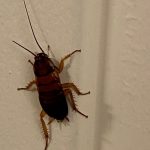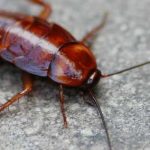Cockroaches are some of the most common household pests.
They can be found in almost any home and are known for their ability to quickly reproduce and spread.
But where do cockroaches lay their eggs? In this article, we’ll explore the answer to this question as well as other interesting facts about cockroach eggs and infestations.
Where Do Cockroaches Live?
Contents
Cockroaches prefer warm, humid areas with plenty of food sources, such as kitchens or bathrooms.
They can also be found outdoors in gardens or woodpiles, where they feed on decaying plant matter.
Why Do Cockroaches Lay Eggs?
Cockroaches lay eggs because they need to reproduce quickly in order to survive.
A single female cockroach can lay up to 50 eggs at once and will typically produce several egg cases throughout her life span.
Each egg case contains between 10-50 individual eggs that will hatch into nymphs (baby cockroaches).
Where Do Cockroaches Lay Their Eggs?
Cockroach eggs are usually laid in dark, protected places such as cracks and crevices near food sources or water sources.
Common places for roach egg cases include behind baseboards, under sinks, inside cabinets, behind appliances, and inside furniture.
How Many Eggs Does a Cockroach Lay?
A single female cockroach can lay up to 50 eggs at once and will typically produce several egg cases throughout her life span.
Each egg case contains between 10 and 50 individual eggs that will hatch into nymphs (baby cockroaches).
What is the Life Cycle of a Cockroach Egg?
The life cycle of a roach egg begins with the female laying an egg case, which contains between 10 and 50 individual eggs.
The eggs then hatch into nymphs, which look like small versions of adult cockroaches but without wings or with fully developed wings if they have them.
The nymphs molt several times before reaching adulthood, which takes anywhere from 2 to 6 months depending on the species of roach and environmental conditions such as temperature and humidity levels.
Once an adult cockroach is reached, it can begin reproducing itself by laying more egg cases containing more nymphs, which will eventually become adults themselves, repeating the cycle over again.
Are There Different Types of Roach Eggs?
Yes, there are different types of roach eggs depending on the species of roach being discussed, such as German roach egg cases, which look like yellowish brown oval-shaped pods containing up to 50 individual white-colored eggs inside them, or American roach egg cases, which look like reddish brown oval-shaped pods containing up to 15 individual white-colored eggs inside them.
Generally speaking, most species will lay similar-looking egg cases regardless of what type it is, so it’s important to identify what type you’re dealing with before taking action against an infestation.
How To Identify Roach Eggs And Prevent Infestations
In order to identify roach eggs, you should look for small, oval-shaped pods that contain multiple white colored eggs inside them near food sources or water sources, such as behind baseboards, under sinks, inside cabinets, behind appliances, etc.
If you find any signs of an infestation, it’s important to take action immediately by removing all food sources from the area, sealing off any entry points into your home (such as cracks around windows or doors), using insecticides specifically designed for killing roaches, and regularly vacuuming or dusting your home.
Taking these steps should help prevent an infestation from occurring or reduce its severity if one has already begun.
Conclusion
In conclusion, we now know that cockroaches lay their eggs in dark, protected places near food sources or water sources, such as behind baseboards, under sinks, inside cabinets, behind appliances, etc.
We also know that each female can lay up to 50 individual white-colored eggs at once, contained within small oval-shaped pods.
Finally, we know how important it is to identify the presence of these egg cases early on so that appropriate steps can be taken immediately in order to prevent further infestations from occurring.






